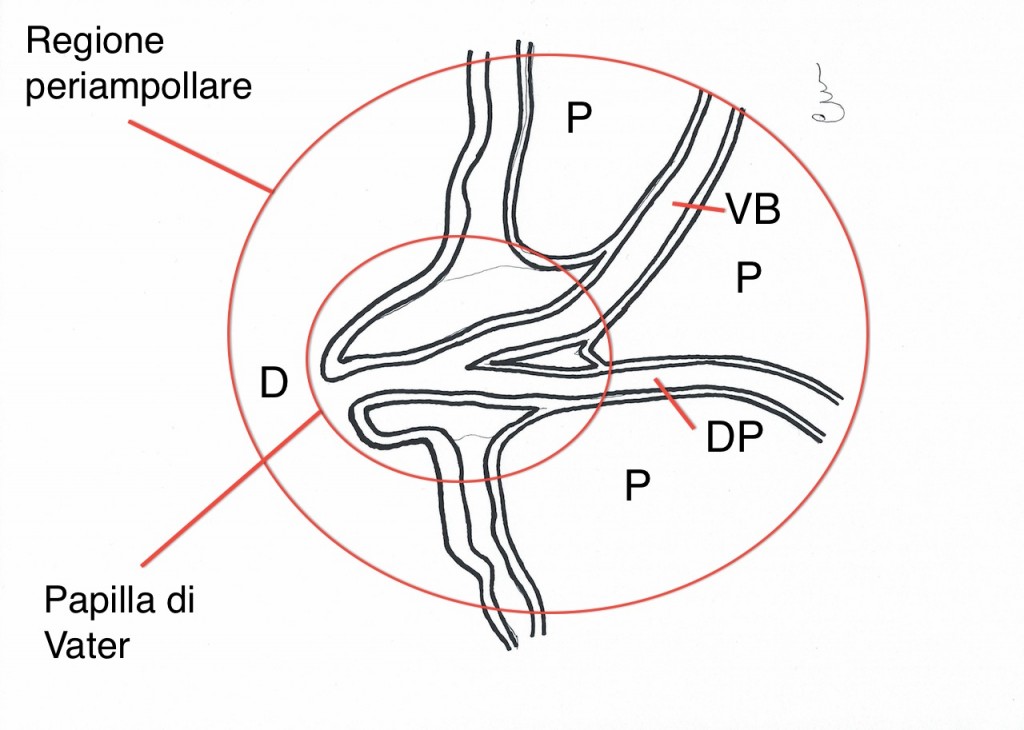Ampullary neoplasms – Overview
Ampullary neoplasms arise in the Ampulla of Vater, a structure formed by the coalescence of the pancreatic duct and the common bile duct. The ampulla is specifically located at the major duodenal papilla, and controls the introduction of bile and pancreatic secretions into the duodenum, as well as preventing the entry of duodenal contents into the ducts.
Periampullary tumours are defined as those that arise within 2 cm of the ampulla of Vater. The periampullary region is histologically complex, and encompass different epithelial types, such as the duodenal mucosa, the common bile duct epithelial lining, and the main pancreatic duct epithelial lining. Therefore, different types of adenoma and adenocarcinoma may begin in this area, including pancreatic ductal adenocarcinoma, distal cholangiocarcinoma, duodenal adenocarcinoma, as well as the aforementioned ampullary adenocarcinoma.
Ampullary adenocarcinomas can be further classified into two histologic subgroups:
- Pancreatobiliary-type ampullary adenocarcinoma
- Intestinal-type ampullary adenocarcinoma
Up to 75% of tumors arising in periampullary region are pancreatic ductal adenocarcinomas. Distal cholangiocarcinomas account for 10-40%, duodenal adenocarcinomas are usually less than 10%, ampullary carcinomas account for 12-40%, according to the different case series. Neuroendocrine neoplasms and other mesencyhimal neolplasms might occasionally arise in the paeriampullary area
All these neoplasms share common symptoms, including:
- Abdominal pain (epigastric, upper right quadrant)
- Poor appetite
- Weakness
- Weight loss
- Jaundice
- Acute pancreatitis














